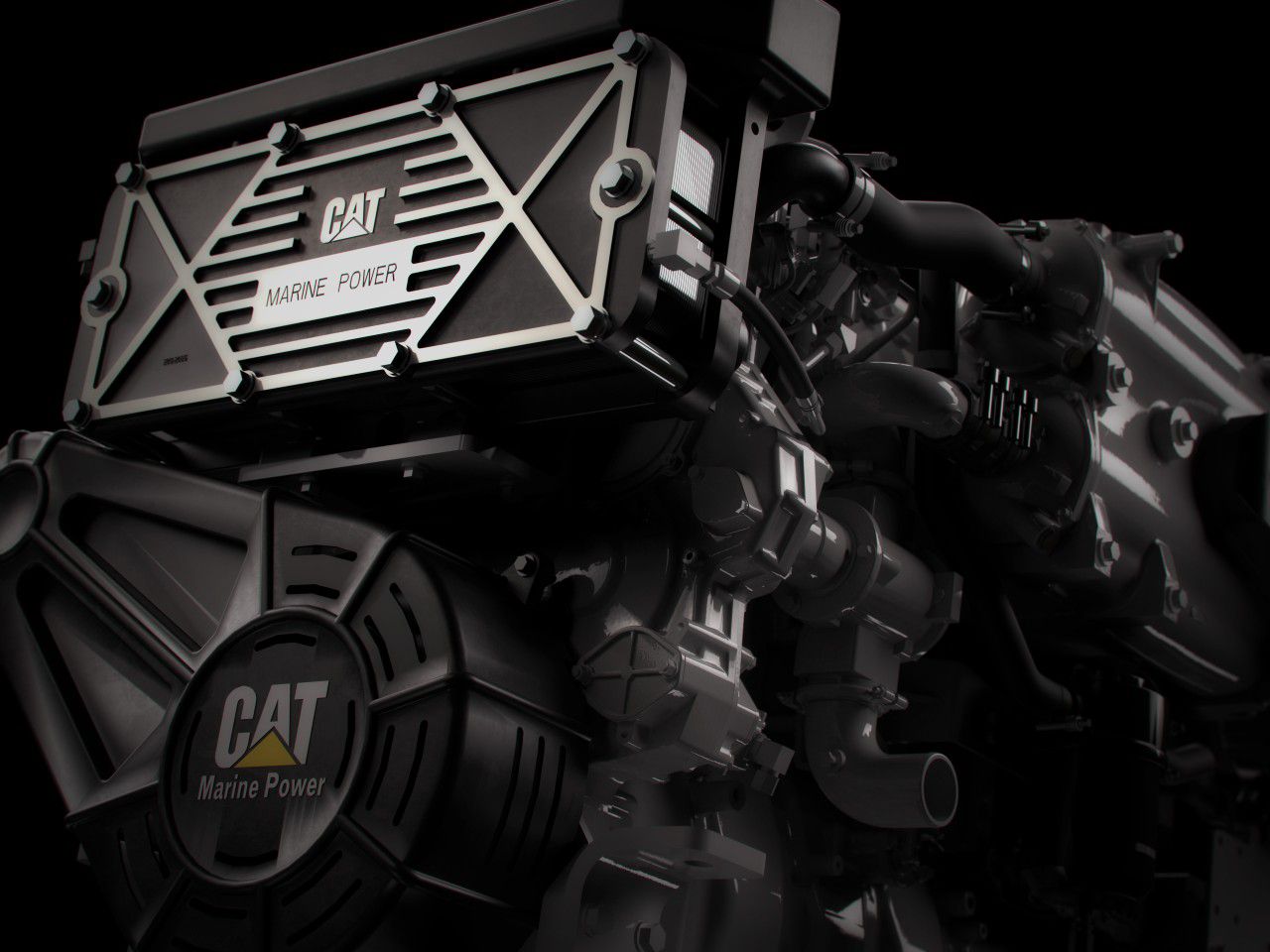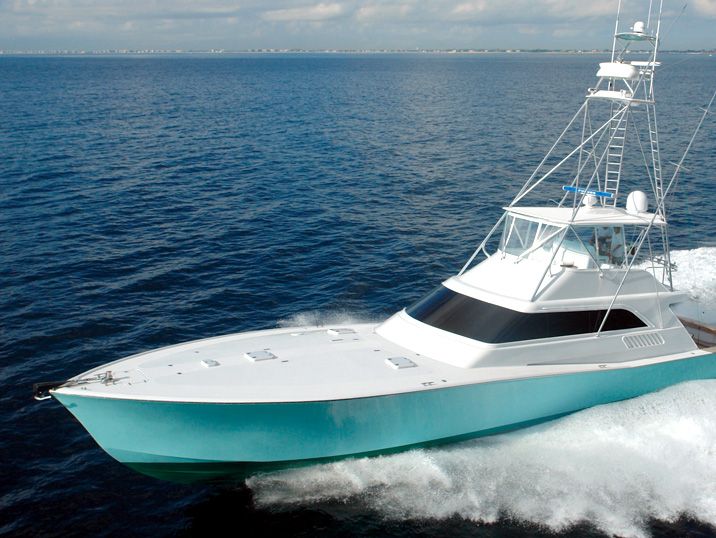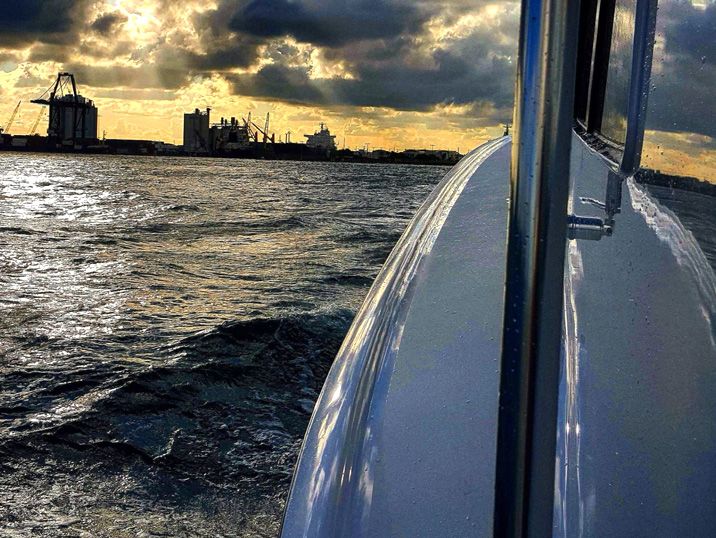If you already have an existing account with another Cat App, you can use the same account to sign in here.
One Account. All of Cat.
Your Caterpillar account is the single account you use to log in to select services and applications we offer. Shop for parts and machines online, manage your fleet, go mobile, and more.
Account Information
Site Settings
Security
FULLY LOADED
What Proper Engine Loading Can Do For Marine Power
Engine loading is one of those concepts that can trip up even the most savvy vessel owner, but if it is not addressed when preparing the vessel for operation, a reduced engine life and possible higher risks of engine failures are increased. Proper engine loading is one of those prudent approaches to vessel operation that eludes a lot of captains and owners, resulting in vessels that are often severely overloaded or underloaded. Although such conditions often result in an immediate loss of vessel performance or efficiency, this may go unnoticed until the engine suffers a major failure. The goal, then, is to avoid these conditions altogether, and this can be done with some simple fixes to how the vessel is operated.
What is engine loading?
There are many definitions to engine loading, but simply put, an engine load describes the force acting on the engine, or the force that the engine must overcome to operate nominally (with a full boat displacement weight & the boat reaching designed speed). There is a major difference between engine loads that on land engines face, and loads that marine power systems face. Marine engines are always under load to a degree, as propelling through water exerts a constant force on the engine – a condition that on land engines should (hopefully) not encounter.
Much of the confusion regarding engine loading is due to vessel owners thinking in terms of land-based engines. Marine vessels face additional forces that must be accounted for.
Most power manufacturers measure engine loading in terms of the speed the engine achieves at wide open throttle. For example, if an engine is rated at 2300 rpm, then it should reach that speed at close to full throttle. Ideally, at wide open throttle, the engine is running a bit beyond its rated speed. Specifically, Caterpillar recommends 1 to 3 percent beyond its rated speed, matching its extended overrun power capability. The acceptable full load speed, then, is between or equal to (2320- 2370 engine rpm) at wide open throttle.
This recommendation helps counter any additional weight added to the vessel or hull fouling, both of which are commonplace. Caterpillar technicians conduct extensive sea trial testing to verify these engine loading numbers. Caterpillar also offers first time sea trials to new vessel owners for free, to ensure that the owner understands how to manage proper engine load.
Know the signs of improper engine loading
There are several factors that act on a vessel’s engine loading capacity, and if the vessel’s engine is not matched up to its operational conditions, the result will likely be an overloaded or underloaded engine. Some of those factors include:
1. Properly sized engines to the boat, to match the hull displacement and desired boat speed.
2. Propeller design – The size and pitch of the vessel’s propellers will act as a load on the engine. If the propeller is too large, or it is designed with too much pitch, it may overload the engine. Propeller design is a common issue with vessels that are suffering from loading issues, as vessels advertised for sale are often fitted with propellers that are ideal for sea trials, but not ideal for standard operation.
3. Hydrodynamic drag – The design of the vessel’s hull and the prevailing sea conditions will act on the engine as a load. And with time, the vessel’s hull will be affected by biofouling, which can add to the vessel’s drag, and thus increasing load.
4.The vessel’s weight – If components and hardware are added to the vessel without compensating for the additional weight in some way, it will add to the engine’s load. This is another common culprit of engine overloading.
If an engine is overloaded, it won’t be able to reach its rated speed, even when operating at wide open throttle. The immediate result is a reduced top speeds and inefficient fuel consumption at the overloaded engine rpm’s and vessel speed. The medium to long term effect is straining the engine to the point of early failure, resulting in more expensive maintenance sooner.
There are also risks involved with underloading an engine, though that may seem counterproductive. When an engine is underloaded, the piston rings inside the combustion chamber do not seat well, resulting in faster wear inside the piston chamber and additional blow by. Carbonization, depositing and component fouling are also issues with engines that are chronically underloaded, so such conditions should be avoided as much as possible.
Proper engine loading is about controlling the vessel’s operation as tightly as possible and accounting for any conditions the vessel may face. Doing so can ensure a vessel owner gets the most out of their engine, in terms of speed, efficiency and durability.




RELATED ARTICLES
-
An At-A-Glance Look At The New 2025 mhp Cat® C32b Marine Engine
How much more power, speed, time on the water and peace of mind will our new 2025 mhp marine engine give you? Take a by-the-numbers look at the C32B.
Learn More -
Caterpillar Marine Power Solutions Guide
Caterpillar Marine offers a variety of integrated solutions to help you protect your investment, minimize owning and operating costs, and maximize up-time. These solutions are specifically tailored to meet your needs. Learn more by downloading our most current solutions and ratings guide.
Learn More -
More Than a Filter. More Time Fishing.
Switching to the right marine fuel filters didn’t just clear up a sooty transom on the Rascal sport fishing boat. See how it also led to more time on the water.
Learn More -
Turbocharged Solution
The supercharged, turbocharged C12.9 marine propulsion engine is ideal for high performance marine applications including yachts, fishing vessels, military vessels, governmental vessels and various other high performance marine applications.
Learn More









